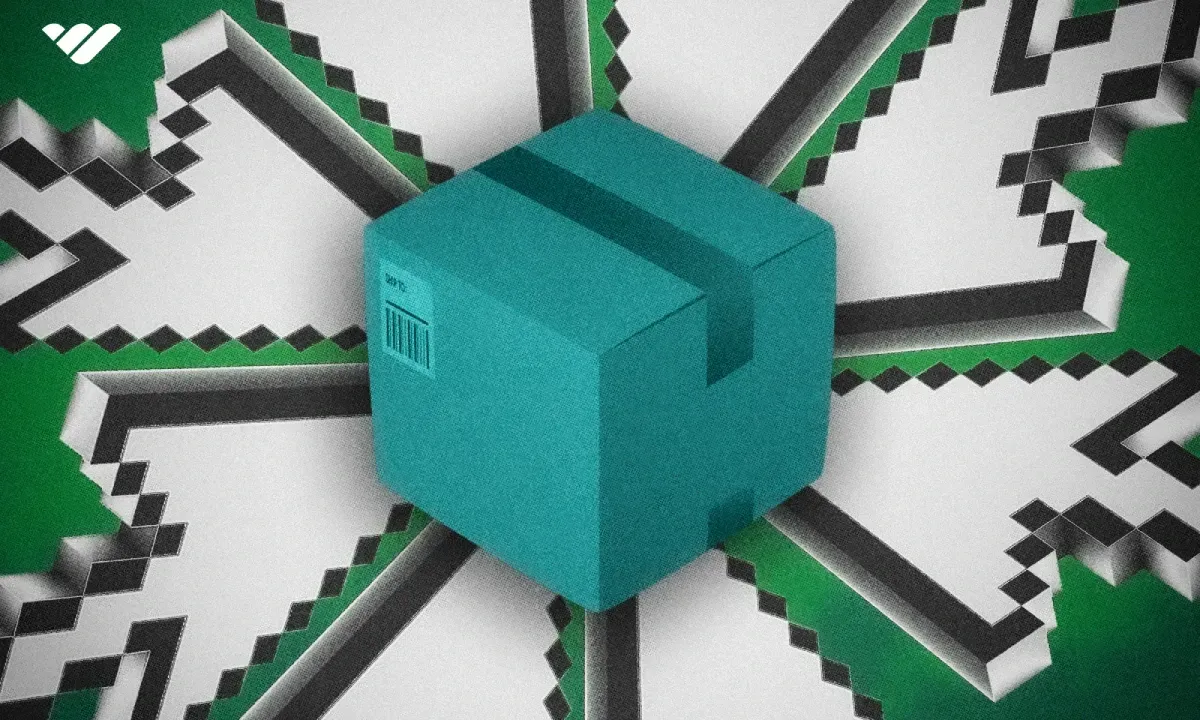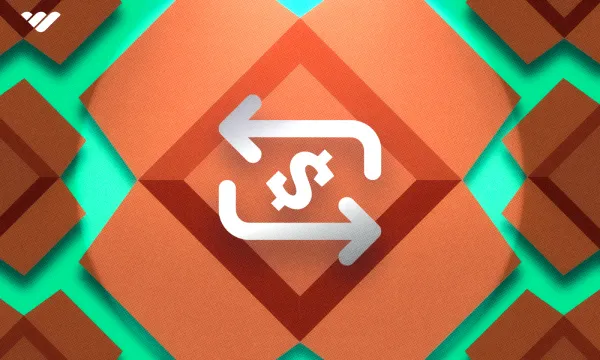If you want to profit in today’s gig economy where both side hustles and entrepreneurial ventures are gaining appeal, you should consider learning the art of flipping items for profit.
Not only does flipping have one of the lowest barriers to entry for any business model, it also provides numerous benefits and its methodology can be applied to various industries.
Let’s check out what flipping is and how you can get started today, including examples and steps.
What is Flipping?

Flipping refers to acquiring an item and then selling it for a profit. Thanks to the free market, anyone can become a flipper and make a side hustle or a living from finding items to flip profitably.
You can consider a flipper a matchmaker between a buyer and seller. A flipper provides value as a middleman who finds and delivers the item for the buyer who otherwise would not have found it.
Pretty much anything can be flipped if there’s a market for it, with as low or high of a budget as you want. This flexibility is just one of the many benefits that flipping has.
Benefits of Flipping
Every business venture has potential risks and downsides, and while flipping is not an exception, it does have benefits that make it particularly appealing to beginners which include the following:
Low barrier to entry
Getting started as a flipper is as simple as finding an item and then finding a buyer for it. With today’s proliferation of online platforms that serve an active userbase of buyers, there are places where you can create an account for free, list an item, and in a matter of minutes reach your target audience. You can even start flipping without any financial investment if you find an item that is being given away for free.
Diverse selection of niches
As long as it’s legal and safe for consumer use, you can flip anything. The biggest benefit of this is that you can choose to work within your realm of expertise. This often aligns with your current hobbies and interests, so flipping can be rewarding both personally and financially.
Some markets are hotter and more profitable than others, so you should always keep in mind to balance your interests with market demand, but this can be fairly easy to do as if you like something, many others probably do as well.
High degree of autonomy and flexible schedule
Working as your own boss and working from home almost entirely online are characteristics of a dream gig for pretty much anyone, and flipping checks these boxes and more. Online marketplaces are like having a storefront that runs 24/7, so you can list and sell an item at any time of day.
The only schedule you’ll need to keep in mind is that of your local post office, but other than that, everything is on your terms, including what you want to buy and where you want to do business, which can be in person as well as online.
Potential for high profits with relatively low effort
One of the amazing qualities of flipping is that in some cases, making more money requires no more effort than making less if you simply increase the price of the item you are buying and selling. For example, if you are dealing in watches, flipping a Timex could net you $10-20 but flipping a Rolex could net you $1,000-$2,000 or even more, and in both cases you will exert the same amount of effort in the listing, packing and shipping.
While it may take you some time to build up to the budget of flipping more expensive things, you should make this a goal when starting out so that you can reinvest in a way that will snowball profits to the point that you’re cashing in big bucks.
Transferrable entrepreneurial skills
While flipping is easy to start, if you are able to build your business to a significant level, you’ll have both the funds and knowledge to start a more complex entrepreneurial venture if that’s your ultimate goal.
Successful flipping requires a diverse entrepreneurial skill set, which includes thorough research of different markets and platforms, understanding buyer psychology, gaining an edge against competition, and delivering excellent customer service to encourage loyalty and repeat business.
All of these skills are useful in any business environment, so as a high level flipper, you’ll gain invaluable experience that goes beyond almost anything you can get from a regular job.
How Can You Flip Items for Profit?

If you want to flip items for profit, you have to start by understanding the two sides of the game, which are buying and selling.
You’ll want to understand the market dynamics from both perspectives. Figure out how you can profitably participate by spotting price discrepancies and learning how to join the group of savvy individuals who are getting items for the lowest market prices.
After buying your item for a good price, you’ll need to list it in an active marketplace. As you continue with this practice, you’ll learn how hard it is to acquire an item, how consistently you can get it for such a price, and how quickly you can sell it.
Here are the five steps that you’ll need to execute in order to achieve the above:
1- Market Research
If you have an interest in flipping within a specific niche, conduct market research by becoming an expert in this niche. Generally speaking, you can gain a good level of expertise simply by noticing the top items in terms of sales volume, profitability, price, and rarity.
You can use both Google and online marketplaces to conduct this research. For example, if you’re targeting baseball cards, you can go on a marketplace like eBay and scroll through to see if you find a specific card or player repeating more than everything else, which will mean that this is a hot card that you should target. You can then sort by items sold and then further filter by price to determine the most expensive items.
Make lists of items that you want to target, and then continue to source the inventory.
2- Source and Prep Inventory
Now that you’ve found a hot item on one platform, search for the exact same item again on a different platform, and if you see a price discrepancy and consistent sales, this can be a great first item to target and flip.
Always buy your product at the lowest end of the market range so you can hopefully sell it for the highest fair market price. Sometimes, you’ll sell items in the exact same condition as they were when you bought them, and other times, you’ll need to prep inventory in order to make a profit. For example, some flippers might buy phones with broken screens and then fix them to flip for a profit.
3- List Your Product
Before listing your product, perform market research so that you know which marketplace is the hottest and most profitable for your item. Sometimes, this means selling on a marketplace that is specific to your niche–for example, GOAT for sneakers or Chrono24 for a nice watch.
Get familiar with all of the marketplaces, including the broader giants like Amazon and eBay in addition to those that cater specifically to your niche. Be sure to keep in mind any platform rules, requirements, fees and seller reputation. In the beginning, you can list on several marketplaces before settling on one that is best for you.
4- Effectively Market Your Product
Making a profitable sale requires a well-thought-out marketing plan. One of the main reasons that a flipper can sell an item for more is because they are an effective marketer.
Some things to keep in mind for effective marketing are good pictures, appealing copy, and finding the hottest marketplace with the hungriest buyers so that you can justify top dollar for your item.
On this same note, buying an item that is poorly marketed in a low-key marketplace and simply effectively marketing it on a popular marketplace is a broadly applicable and evergreen strategy that you can use for flipping anything.
5- Fulfillment and Customer Service
The last and one of the most important steps ,if you want to grow to be a top flipper, is to excel in fulfillment and customer service.
This means shipping the item promptly and safely while making the customer feel like they are getting VIP treatment the entire time. When shipping the item, make sure to take care when packing it. You can even personalize the packaging as a way to further stand out and be memorable.
Be prompt in communication throughout every step of the journey, accurately addressing any questions or concerns.
By providing top-notch fulfillment and personalized customer service, you’ll be able to gain repeat business and also move up into the realms of selling the most expensive items where the overall bar for customer service and fulfillment is often higher.
What’s the Difference Between Flipping and Reselling?

Flipping and reselling are sometimes used interchangeably, but there is a subtle and important difference between the two.
While all reselling can be categorized as flipping, not all flipping is reselling. One primary example is how flipping includes getting items for free and trading, making it more diverse than reselling.
There’s a story of a man who flipped a paperclip into a house, and he did so by trading up without needing to invest money or resell along the way. This shows how much more flexible and potentially rewarding flipping can be compared to reselling. Flipping also generally focuses on moving inventory faster than reselling.
Both flipping and reselling are forms of retail arbitrage, which you can get up to speed on by checking out our retail arbitrage guide that explains this strategy thoroughly.
Best Items to Flip for Profit
Here are some specific items that you can flip for profit, in addition to a brief description of the market and some actionable advice on how to participate:
Flipping furniture
One of the best things about the furniture market is that you can source items for free far more often than other markets as there are many people consistently offloading pieces for decluttering or moving reasons. You’ll simply need a large truck to transport the items, and you can also refurbish or upcycle pieces to make them more valuable and appealing to a new owner.
Flipping cars
There is always a steady demand for affordable used vehicles, which makes the car flipping market both active and potentially lucrative.
The best strategy is to find someone who wants to sell a decent car quickly for monetary reasons or because their car requires a simple fix that they don’t want to address.
It's best to focus on popular models that are known for value and reliability.
Flipping watches
Watches are a great item to flip as they have big profit potential yet are easy and cheap to store and ship.
Before entering the market, you’ll want to develop an understanding of the best and most reliable brands, the risk of running across fakes, and where and how to source and sell watches.
You can start flipping watches with as little or as much money as you want, as there is a highly active market for watches from budget-friendly pieces all the way up to five or even six figures.
Flipping electronics
The market for electronics covers a vast landscape ranging from the latest tech to nostalgic relics, so there is a diverse and steady supply for you to choose from if you want to flip them.
Focus on popular items such as smartphones, gaming consoles, laptops and sought-after vintage devices. You’ll also want to fully assess the current condition of your item and accurately describe it for buyers.
You can also learn how to diagnose and fix simple issues if you want to run a fix-and-flip business–laptops and phones are two great items for you to apply this model.
Flipping vintage clothing
A growing group of fashion-forward consumers are shifting to buying vintage wear for both environmental reasons and the fashion statement.
You’ll need to first develop an eye for current trends. Check out curated Instagram style accounts for inspiration, and visit your local trendy thrift store to get an idea of what pieces people like and how much they’re worth. Sourcing from garage sales, eBay or thrift stores is the best way to find undervalued gems that you can sell for more.
Flipping real estate
For those with the budget, knowledge, and interest, real estate is perhaps the most lucrative thing you can flip.
While engaging in this game takes a good deal of due diligence, knowledge, and investment, the reward can be worth it as the paydays can be six figures or more if you execute everything perfectly.
To succeed in this game, you’ll have to develop an understanding of regional markets, constantly be on the lookout for undervalued properties, and develop a network of reliable contractors and vendors for renovations to make your property more valuable when you list it on the market for a profitable flip.
Another strategy that you can learn is real estate wholesaling, which requires little to no upfront investment and no ownership, making it much faster than traditional strategies for real estate flipping.
Find the Hottest Items to Flip with Whop’s Reselling Communities
If you now feel compelled to go out there and start your flipping hustle today, consider joining a community that will help you reach your goals faster.
While flipping is simple in theory, the exact execution can prove complicated as it can take a good amount of market research and low key sourcing and selling strategies to actually engage in the game profitably.
There’s no guarantee that you’ll make money while flipping, so joining a group of expert flippers will save you from potentially costly mistakes and get you to profitability much faster than if you were to start your flipping business all alone.
Whop is home to some of the best expert-led private groups that are cashing in big with flipping and reselling. Check out the latest groups right here and start your flipping journey today!
Flipping FAQs
What is the best way to start flipping?
One of the benefits of flipping is its diversity, but this can prove to be a double edged sword as taking the first step can be overwhelming. The best way to start flipping is to think of everything that you’ve purchased in the past month, and see if you bought any of those items from a reseller. You should then do price research and find out how and where to get that or a similar item for cheaper, and then list and sell it. This is the best way to get started because you’ll be dealing in a niche that you are already familiar with and if anything goes wrong, you won’t lose because you can keep an item that you like anyways.
How risky is flipping?
Flipping is generally a low risk business, but there are some negative outcomes that are possible if you choose to engage in this business. These risks include losing money if you end up selling an item for less than your acquisition price, scams or robbery, and losing space and money by storing inventory that doesn’t move. You can lower your risk by engaging in an active and profitable market that you have conducted thorough research on and staying safe by avoiding any red flags that are common with scams and theft.
How much money do I need to flip?
You can start flipping with as little or as much money as you want, and you can even start flipping for free by seeking out the free section of your local classifieds or even digging up through your house for unused items that you think other people might buy. If you want to engage in a hot market, get an understanding of the investment you’ll need to make to acquire just one item, and this will be all you need to start to test it out before eventually scaling.
What are the best items to flip?
While there is a market for flipping anything, the best items to flip are those with an active and freely priced secondary market that anyone can engage in. The more active a market is and the higher the volatility in pricing, the better the profits are for items within it. Another thing to keep in mind is your level of interest and expertise in a market and its items, as areas where you already have above average interest and knowledge will allow you to have an edge over other sellers, making these the best items for you.


![Top 18 best ticket reselling Discord servers [November 2024]](/blog/content/images/size/w600/2023/12/Top-Ticket-Reselling-Discord-Servers--1-.webp)
![Top 22 best sneaker reselling Discord servers [2024]](/blog/content/images/size/w600/2024/01/sneaker-reselling-discord.webp)
![Top 26 best reselling Discord servers [November 2024]](/blog/content/images/size/w600/2023/09/reselling-discords.webp)
